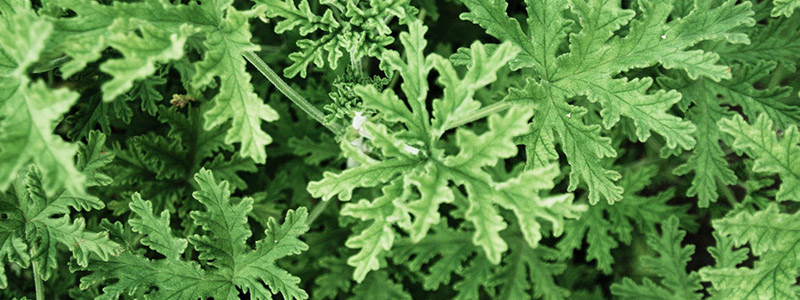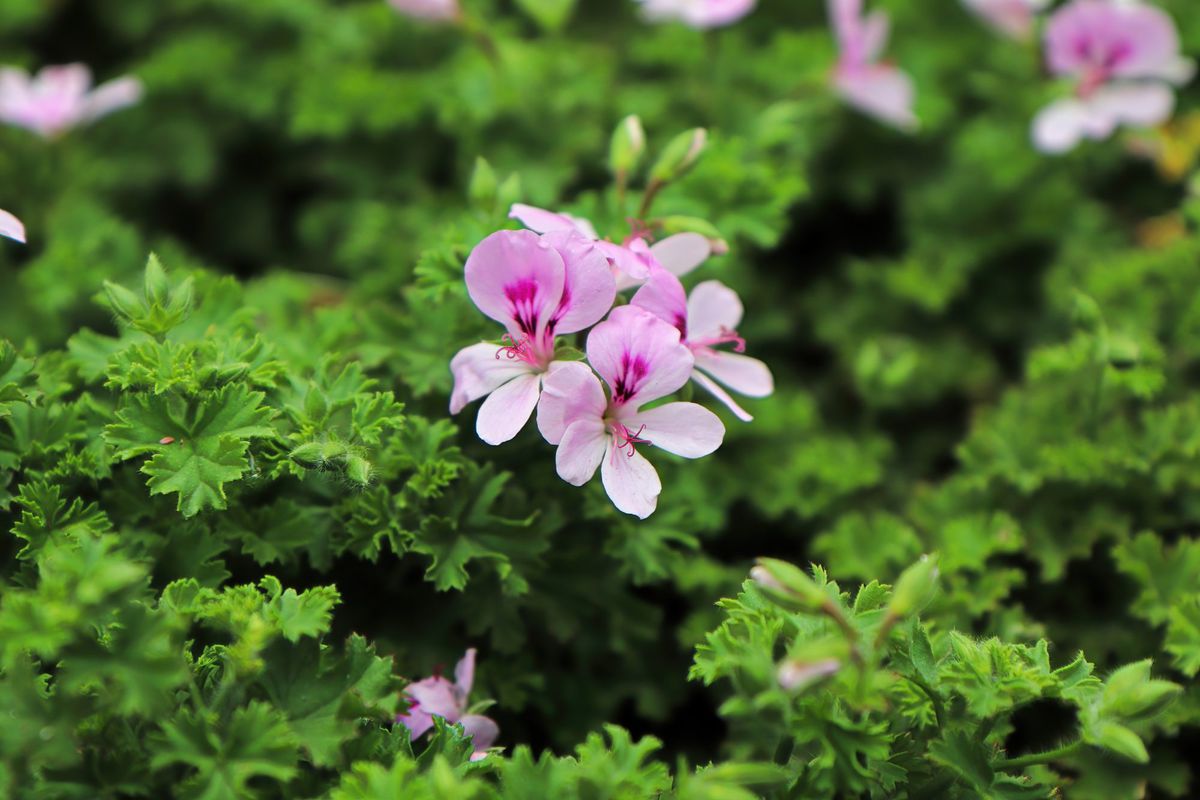Citronella Plants – Everything You Need to Know About Them
Everyone knows the smell of citronella. That distinct, lemony scent is often used to help keep pesky bugs away. But what most people don’t know is that you can grow your citronella plant right at home! Citronella plants are easy to care for and make a great addition to any garden. Not only do they help keep bugs at bay, but their vibrant green leaves also add some color to your landscape. So if you want to take advantage of citronella’s advantages without leaving your backyard, then be sure to give growing a citronella plant a try!
How it looks, and where does it come from;
Green leaves cover the shrub, which smells strongly of citrus. Citronella is often used in mosquito repellents, candles, and soaps. It thrives in warm, humid locations and does not survive exposure to low temperatures. Citronella is native to Asia but can be grown in other parts of the world. Also, it thrives in warm, humid locations and does not survive exposure to low temperatures. Citronella is a relatively low-maintenance plant that needs regular watering during the growing season. Once established, the plant is drought-tolerant. Citronella can be propagated by seed, division, or cuttings.

Propagation of citronella plants
The citronella plant is best known for its ability to repel mosquitoes, making it a popular choice for outdoor spaces. These plants are simple to maintain but tricky to grow. Fortunately, you can clone citronella plants from cuttings and develop new ones with a bit of time and effort.
Choose the cutting
The first step is to choose a healthy cutting from the parent plant. Cuttings should be taken from new growth, as this will be the most likely to root successfully. Once you have chosen a cutting, remove leaves from the stem’s bottom half. This will help to prevent the cutting from rotting.
Fill the pot with soil
Next, fill a pot with well-draining soil and water thoroughly. Make a small hole in the center of the pot, and then insert the cutting. Make sure to pack the soil around the base of the cutting well so that it will stay in place.
Provide optimal conditions
Place the pot in a bright location out of direct sunlight and keep the soil moist but not soggy. Roots should begin to form within 4-6 weeks. Once roots have been established, you can transplant your new citronella plant into its permanent home outdoors.
Grow healthy citronella by taking care of;
Light
Providing plenty of light is one of the most important things you can do to care for citronella plants. These plants tend to get leggy without enough light, so giving them as much sunlight as possible is key. You can also help them get the light they need by placing them in a south-facing window.
Moisture
In addition to light, citronella plants also need well-drained soil and consistent moisture. Be sure to water them regularly and fertilize them every few weeks during the growing season. With proper care, citronella plants will thrive and provide you with a natural way to keep mosquitoes at bay.
Soil
Citronella plants need moist but well-draining soil. A peat moss-based potting mix is a good option. You should also avoid using regular garden soil, as it doesn’t hold water well.
Fertilizer
Citronella plants also need to be fertilized regularly. A general-purpose fertilizer will work fine. Apply the fertilizer every two weeks during the growing season. Citronella plants are also susceptible to fungal diseases. If you notice any signs of disease, such as yellowing leaves, you should treat the plant with a fungicide.
Humidity and temperature
As any gardener knows, temperature and humidity are essential for growing healthy plants. Citronella plants are robust and can handle temperatures from the upper 30s to 90 degrees Fahrenheit. Bring your plant inside if it’s colder than freezing or hotter than 90 degrees.
Citronella also prefers high humidity, so misting or setting the plant on a pebble tray can help increase moisture levels. In addition, citronellas should be placed in bright, indirect light. Too much direct sunlight can scorch the leaves, so it’s important to find a spot that receives plenty of light without being in direct sunlight. With proper care, citronellas can thrive indoors or outdoors, making them a versatile addition to any home.
Pruning
Pruning is one of the least important tasks when caring for citronella plants. These plants grow best when left to their own devices, and they require very little intervention from humans. In fact, pruning can actually do more harm than good, as it can damage the delicate structure of the plant. If you must prune your citronella plant, do so sparingly and carefully. Only remove dead or dying leaves, and avoid cutting into the green parts of the plant. With a little care, your citronella plant will thrive without any need for pruning.
Factors that affect the citronella growth
Leaf blight
Citronella plants are a type of grass that is commonly used in mosquito repellents. The plant has a strong citrus smell that helps to repel mosquitoes. However, citronella plants can be affected by various pests and diseases. Leaf blight is a common fungal disease that can cause plant leaves to turn brown and die. The disease is spread by wind and rain and can quickly kill a citronella plant if left untreated.
In addition, citronella plants are also susceptible to various insect pests, such as aphids and caterpillars. These insects can damage the leaves of the plant, making them more vulnerable to disease. As a result, it is important to carefully monitor citronella plants for signs of pests or disease. If left unchecked, these problems can quickly kill the plant.
Pests
Citronella plants are a popular way to keep mosquitoes at bay and are also relatively easy to care for. They prefer bright light and well-drained soil and should be watered regularly. Citronella plants can be susceptible to root rot, so it’s important to make sure that the soil doesn’t become too soggy. Aphids and whiteflies can also affect these plants, so regular inspection is key.
In case if you see any pests on the leaves, you can simply rinse them off with water. With a little care, your citronella plant will thrive and help keep your outdoor space mosquito-free.
Wet root
One of the most common problems is wet feet. Citronella does not tolerate wet conditions well, and the roots can rot if the soil is too moist. As a result, it’s important to make sure that the soil drains well and that the plant does not sit in water. Another factor that can affect growth is temperature.
Citronella prefers warm weather and will not do well in cold temperatures. Choosing a location with plenty of sunlight and warm temperatures is important. With proper care, citronella can be a versatile and easy-to-grow plant.
Sun exposure
Citronella plants are a type of grass that is widely used for its strong citrus scent, which helps to repel insects. The plant can be grown in other parts of the world with the right conditions. One of the most important factors for citronella growth is full sun exposure. The plant needs at least six hours of direct sunlight each day in order to thrive.
Alternatively, if the plant does not get enough sunlight, it will become leggy and produce fewer oils. In addition to sun exposure, citronella plants need rich, well-draining soil and regular watering. With the proper care, citronella plants can provide a natural way to keep pests at bay.
Benefits of citronella plants
Citronella plants are best known for their ability to repel mosquitoes, but they also offer a wide range of other benefits. Here are 10 reasons to consider adding citronella to your garden:
- Citronella is an attractive plant that can add a splash of color to any garden.
- In addition to mosquitoes, citronella can also deter other pests like ants and flies.
- Citronella is easy to grow and care for, making it a great choice for beginner gardeners.
- The strong scent of citronella can help mask other less desirable smells in your garden.
- Citronella can be used to make natural insect repellents that are safer for the environment than chemical-based products.
- The oils in citronella can be used for aromatherapy or added to homemade cleaning products.
- Citronella is a popular ingredient in many Asian dishes, so having it in your garden can give you the freshest possible flavor.
- Harvesting your own citronella can save you money over buying commercial products at the store.
- appealing
- Citronella plants are great gifts for fellow gardeners or anyone who enjoys outdoor activities.
Finally, growing citronella helps support the global market for this important crop. You can enjoy all these benefits by growing citronella in your garden.
Can it be dangerous?
Although citronella plants are commonly used to repel mosquitoes, they can have many harmful effects on the environment.
- Citronella plants are often used as an alternative to pesticides, but they can be just as harmful to beneficial insects like bees and butterflies.
- Citronella oil can contaminate water sources, killing fish and other aquatic creatures.
- The plant’s strong scent can disturb wildlife and cause them to avoid areas where citronella is present.
- The plant can be invasive, crowding out native vegetation and disrupting natural ecosystems.
Finally, citronella plants require a lot of water and fertilizer to maintain their health, which can put a strain on local resources. For these reasons, it is important to consider the potential drawbacks of citronella before planting it in your garden.
Conclusion
Citronella plants are best known for their ability to repel mosquitoes, but they can also be used to deter other pests, such as ants, fleas, and ticks. In addition to their pest-repelling properties, citronella plants are also attractive and easy to care for. They can be grown in pots or in the ground, and they prefer full sun and well-drained soil. When choosing a spot for your citronella plant, make sure to keep it away from areas where you entertain or relax, as the strong scent of the oil can be overwhelming. With proper care, citronella plants can provide years of enjoyment and protection from pests.
FAQs
- What kind of climate does citronella need?
Citronella is a tropical plant that needs warm temperatures and high humidity to thrive. If you live in an area with cold winters, you’ll need to bring your plant indoors or keep it in a greenhouse during the colder months.
- How much sun does citronella need?
Your citronella plant will do best in partial shade, although it can tolerate full sun if necessary. In case if the plant faces direct sunlight can cause the leaves to scorch, so be sure to provide some shelter from the hottest afternoon sun.
- How often should I water my citronella?
Citronella likes its soil to stay moist but not soggy. Aim for watering about once per week or as needed to keep the soil from drying out completely. If your plant is wilting or its leaves are turning brown, that’s a sign that it needs more water.
- Will citronella repel mosquitoes if I keep it in my house?
Unfortunately, no. Citronella works as an insect repellent because of the oil that’s produced by its leaves. When the leaves are crushed or broken, they release this oil into the air, which keeps mosquitoes (and other insects) at bay. Because indoor plants don’t experience this type of disturbance, they won’t be effective at repelling insects inside your home. However, placing a couple of potted citronellas near your door or patio can help to keep mosquitoes away from your entertaining outdoor areas.
Related Posts







